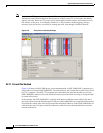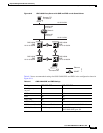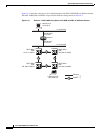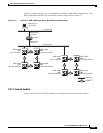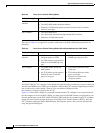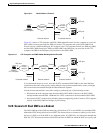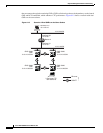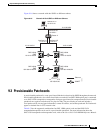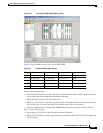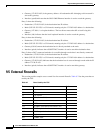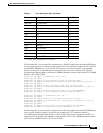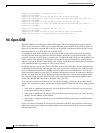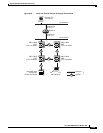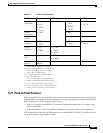
9-20
Cisco ONS 15600 Reference Manual, R7.2
Chapter 9 Management Network Connectivity
9.4 Routing Table
Optical ports have the following requirements when used in a provisionable patchcord:
•
An optical port connected to an ONS 15454 transponder or muxponder port requires an SDCC or
LDCC termination.
•
If the optical port is the protection port in a 1+1 group, the working port must have an SDCC or
LDCC termination provisioned.
•
If a remote end (ONS 15454) of a provisionable patchcord is Y-cable protected, an optical port
requires two patchcords.
9.4 Routing Table
ONS 15600 routing information appears on the Maintenance > Routing Table tabs (Figure 9-17). The
routing table provides the following information:
•
Destination—Displays the IP address of the destination network or host.
•
Mask—Displays the subnet mask used to reach the destination host or network.
•
Gateway—Displays the IP address of the gateway used to reach the destination network or host.
•
Usage—Shows the number of times this route has been used.
•
Interface—Shows the ONS 15600 interface used to access the destination.
–
pend0—The Ethernet management interface.
–
pdcc—An SDCC interface, that is, an OC-N trunk (span) card identified as the SDCC
termination (0 to 128).
–
lo0—A loopback interface.
–
pend2—The craft-only RJ-45 jack on the front of the TSC.
–
motfcc0—Interface on the TSC that connect the TSC to all other cards except the other TSC.
–
hdlc0—Connects the two TSC cards together; traffic cards forward DCC packets over the
motfcc0 Ethernet interface.
Table 9-5 ONS 15600 and ONS 15454 Client and Trunk Card Combinations in Provisionable
Patchcords
ONS 15600 Trunk Cards
ONS 15454 Client Cards
MXP_2.5G_10G/
TXP_MR_10G TXP(P)_MR_2.5G
MXP_2.5G_10E/
TXP_MR_10E
OC-192 Yes — Yes
OC-48 Yes Yes Yes
ASAP (OC-48 PPM) Yes Yes Yes



